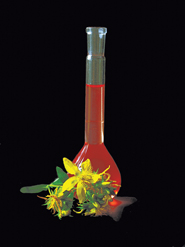Letters to the Editor
A reader offer support for the evidence base for nutritional supplements, while another cites anecdotal evidence on the benefits of fasting.
Supporting supplements
I am writing to clarify what I believe to be misleading information in the box titled “Herbal supplements' worst offenders,” which accompanies the article “Sorting out the worst offenders among herbal supplements “ in the October 2009 ACP Internist.

In terms of the warnings about supplements as they relate to interactions with prescription drugs, the warnings in the box are based on pharmacokinetic data, not on clinical data. Even though St. John's wort decreases serum levels of benzodiazepines by 25% to 50% and decreases serum levels of amitriptyline, these changes were not associated with clinical signs in a study of 12 patients (Int J Clin Pharmacol Ther. 2004;42:139-48).
While the Natural Medicine Comprehensive Database rates the interaction of St. John's wort with oral contraceptives as “Major” and states “do not take this combination,” the conclusion is based on case reports of unwanted pregnancies and pharmacokinetic data. In contrast, a small randomized, controlled trial in 18 healthy women on low-dose oral contraceptives found “no evidence of ovulation during low-dose oral contraceptive and St. John's wort extract combination therapy” (Br J Clin Pharmacol. 2003;56(6):683-90).
While there are published case reports of subdural hematoma, hyphema, subarachnoid hemorrhage, and intracerebral hemorrhage with Ginkgo biloba, a 14-day randomized, controlled trial in 32 healthy volunteers found that Ginkgo biloba extract (EGb 761) at daily doses of 120 mg, 240 mg, and 480 mg did not alter platelet function or coagulation (Clin Lab Haematol. 2003;25:251-3). Furthermore, ginkgo does not affect international normalized ratio, based on data from a four-week prospective placebo-controlled trial (published in Danish) in 24 stable patients taking warfarin (Ugeskr Laeger. 2003;165:1868-71) and an open label, three-way, randomized crossover trial in 12 men (Br J Clin Pharmacol. 2005;59:425-32).
Regarding the warning about black cohosh, I believe that breast cancer is a relative contraindication to its use. While the Natural Medicine Comprehensive Database states “Black cohosh shouldn't be used by women with existing breast cancer or women with a high risk of developing breast cancer,” the preceding referenced data is that “research on breast cancer cells suggests that black cohosh doesn't promote tumor growth (9435, 9436, 11911). Some constituents of black cohosh seem to inhibit breast cancer cell growth (11912). Animal research suggests that black cohosh doesn't increase or decrease risk of breast cancer (9999). But black cohosh does seem to increase metastatic cancer in animals with existing cancer (9999).” I don't agree with the conclusion reached by the Natural Medicine Comprehensive Database, based on the data cited in the monograph.
Sanford H. Levy, FACP
Amherst, N.Y.
A new look at fasting
Regarding your report (“Alternate-day fasting may help weight loss in obese adults ,“ ACP InternistWeekly, Nov. 17), I recently returned from several years at the 250-bed Good Shepherd Hospital in the Democratic Republic of Congo. I saw many older patients with hypertension, diabetes, cerebral vascular accidents and rheumatic heart disease. Congestive heart failure and mitral valve disease were very common.
In three years, I saw only three cases of atrial fibrillation of sustained or intermittent varieties. I saw no one with angina pectoris or myocardial infarction, nor anyone with signs or symptoms of atherosclerotic or arteriosclerotic cardiovascular disease.
Puzzling to me were the many cerebral vascular disease patients in the absence of coronary artery or peripheral vascular arteriosclerotic occlusive disease.
In the area of the country where I worked, there was plentiful food. Collecting firewood and carrying water from the rivers required a great deal of effort. There was no electricity and no refrigeration. Habit and tradition dictated that most families ate their one main meal together around the cooking fire in the evening. There usually were no snacks or coffee breaks. People generally fasted for 24 hours between their major meal and the next caloric intake.
I reported my observations to the American Heart Association and inquired if there might not be some interest in studying this. The University of Illinois study summarized in ACP InternistWeekly seems to indicate that risk factors for coronary artery disease can be simply, inexpensively and naturally reduced by prolonging fasting intervals between meals.
Further investigations with subjects fasting for variable prolonged intervals might show correlation of longer fasting with greater reduction of risk factors. Could fasting stimulate and induce normally protective but dormant and underutilized natural physiologic enzymatic and metabolic processes? Does frequent caloric intake without adequate prolonged fasting lead to unnatural and pathological lipid accumulation and cardiovascular disease?
Perhaps it is not what we eat, the calories we eat, or lack of exercise as much as allowing sufficient fasting time to allow normal physiological stimulation, inducement and augmentation of our dormant and underutilized protective lipid breakdown mechanisms. Could we protect ourselves from atherosclerotic and arteriosclerotic cardiovascular disease by simply increasing fasting intervals between meals?
Since there are areas in our world where coronary artery disease does not occur, as in the Kasai Provinces of the Democratic Republic of Congo, should we not be curious and investigate to discover why? Many of these same African people develop coronary disease when they immigrate to the United States and adapt to our customary three square meals, with mid-morning and mid-afternoon coffee breaks and a little snack from the fridge before bedtime.
William J. Sager, ACP Member
Ashland, Ore.



